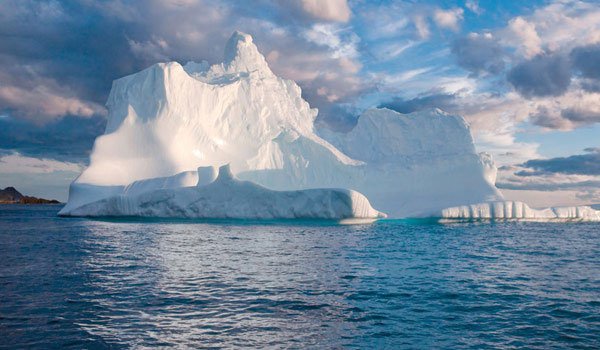The question facing scientists and policy makers is how much sea level rise they need to plan for in the coming decades, and recent findings are concerning.
On Wednesday, NASA scientists said they expect several feet of global sea level rise by the end of the century, with an increasing likelihood that conservative projections will turn out to be too low. Recent scientific findings on the speed and scope of melting ice sheets in Greenland and parts of Antarctica suggest that global average sea level rise may approach or exceed 1 meter, or 3.3 feet, by 2100.
NASA released a series of visualizations to illustrate recent trends in Greenland, Antarctica and globally. The video below shows the variability in sea level rise as detected by satellite-based altimetry during the past two decades.
If the Greenland ice sheet, for example, were to melt completely, it would raise sea levels by about six meters, or at least 20 feet. Widespread melting in Antarctica contains an even greater potential to raise sea levels, too, but this is thought to occur over the longer term. (Or, at least, we better hope it does.)
According to NASA data gathered by satellites and surface observations, the Greenland ice sheet is shedding about 303 gigatons of ice a year into the ocean, making it the single largest source of sea level rise from melting ice (sea level rise is also occurring because of thermal expansion, since seawater expands as it gets milder).
The Jakobshavn Glacier, which is the world's fastest flowing glacier, is located in Greenland. It recently lost a chunk of ice so large that it would be sufficient to cover Manhattan in nearly 1,000 feet of ice. That glacier, as well as many others in Greenland, is melting as warmer waters erode the ice from below, sending the glacier's grounding line retreating further inland and speeding up ice loss.
Eric Rignot, a glaciologist at the University of California, Irvine, and a researcher at NASA’s Jet Propulsion Laboratory, cautioned reporters on Wednesday against concluding that conservative sea level rise projections are the most likely ones to come to fruition.
“Observations suggest that we should be very cautious to conclude too soon that conservative scenarios are reasonable,” said Rignot, according to the Washington Post. “They may not be.”
Antarctica has lost an average of 118 gigatons of ice per year, with most of the loss coming from West Antarctica, according to NASA. Greenland’s ice loss has accelerated by 31 gigatons of ice per year every year since 2004, while West Antarctica has experienced an ice mass loss acceleration of 28 gigatons per year and counting.
Global sea level rise is not uniform, though. Local rates of sea level rise vary widely around the world. Sinking land along the Gulf Coast, for example, makes New Orleans and other areas more vulnerable to sea level rise than other locations in the U.S., and ocean currents have been accelerating sea level rise along the Mid-Atlantic and Northeast coastlines in the U.S.
"... It is not rising evenly, like a bathtub filling with water," NASA said on its website. "Currently, regional differences in sea level rise are dominated by the effects of ocean currents and natural cycles such as the Pacific Ocean's El Niño phenomenon and Pacific Decadal Oscillation."
According to NASA, sea level varies by as much as six feet, or two meters, from one location to the next around the world.
(mashable.com)






